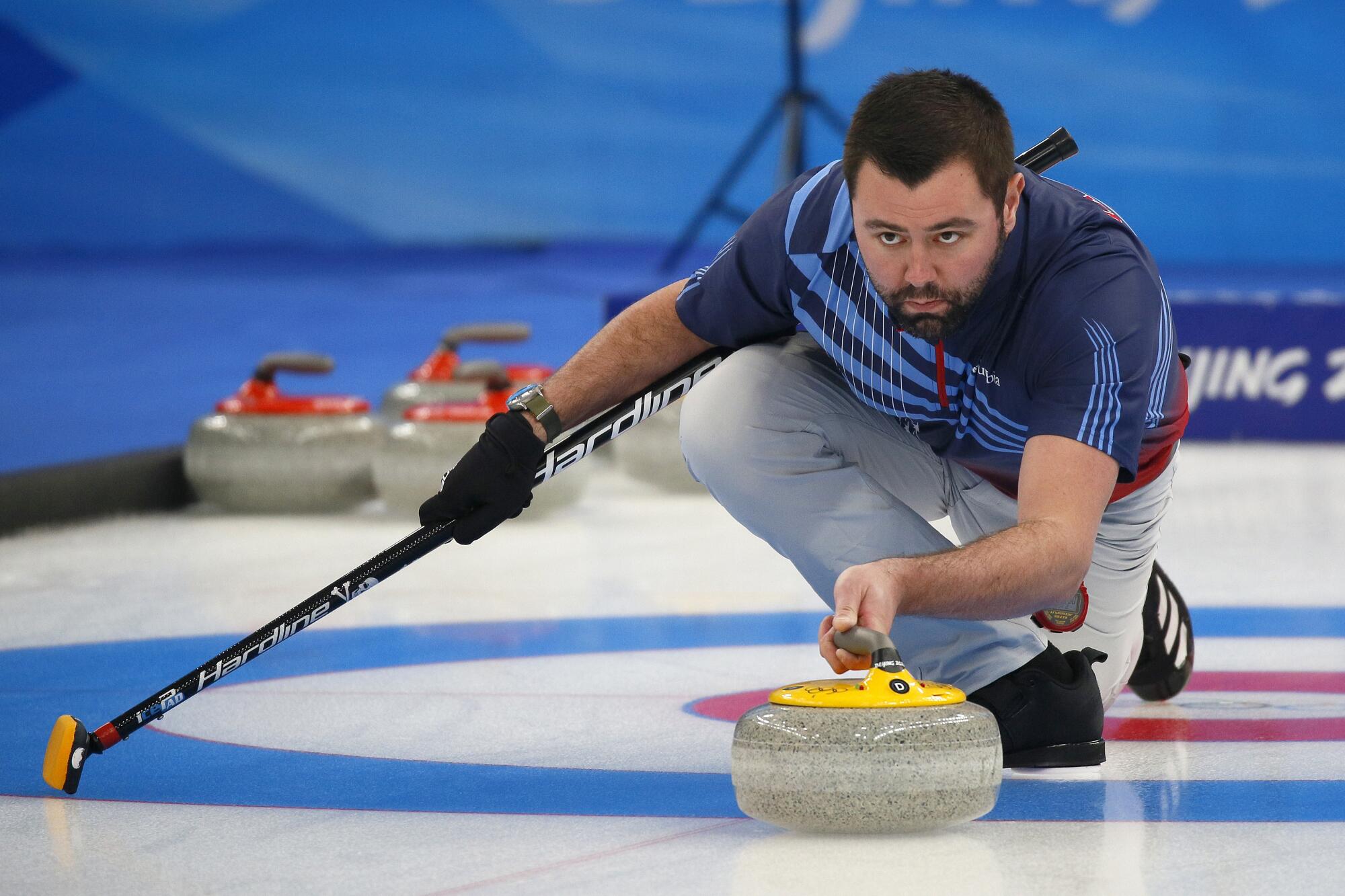
Curling, often referred to as “chess on ice,” may seem like a leisurely pastime to some, but there is much more to this unique sport than meets the eye. Whether you’re a curling enthusiast or simply curious about the game, you’ll be fascinated by these 18 captivating facts about curling. From its ancient origins to the intricate strategy involved, curling has a rich history and a dedicated following around the world.
In this article, we’ll uncover the intriguing facts that make curling such a fascinating sport. From the origins of the sport in medieval Scotland to its inclusion in the Winter Olympics, we’ll delve into the cultural significance, rules, and even some fun trivia about this beloved winter activity. So grab your broom, put on your grippers, and get ready to sweep into the world of curling!
Key Takeaways:
- Curling, a Scottish sport dating back to the 16th century, involves sliding granite stones on ice towards a target called the “house,” requiring strategy and teamwork.
- With its nickname “The Roaring Game,” curling has evolved into a popular Olympic sport, promoting camaraderie and inclusivity among players of all ages and skill levels.
Curling originated in Scotland during the 16th century
The sport of curling has its roots in Scotland, dating back to the 16th century. It quickly gained popularity and spread to other parts of the world.
The game is played on ice
Curling is played on a rectangular sheet of ice, known as a curling rink. The ice surface is carefully prepared to ensure smooth gameplay.
Teams consist of four players
Curling is a team sport, with each team consisting of four players. There are typically two sweepers, a skip, and a vice-skip.
The objective of the game is to slide stones towards a target
The aim of curling is to slide granite stones, also known as rocks, towards the target called the “house.” The team with the stone closest to the center of the house scores points.
The stones are made of granite
Curling stones are made from a specific type of granite that comes from Scotland. They are polished to allow for smooth movement on the ice.
Brooms are used to sweep the ice
Sweeping plays a crucial role in curling. The sweepers use brooms to brush the ice in front of the sliding stone, which helps control its speed and direction.
Curling is known as the “Roaring Game”
Curling earned the nickname “The Roaring Game” due to the sound the stones make as they travel across the ice.
It has been an Olympic sport since 1998
Curling made its debut in the Winter Olympics in Nagano, Japan, in It has since become a popular and highly anticipated event.
The sport requires strategy and precision
Curling is often referred to as “Chess on Ice” because of the strategic thinking and precise shot-making required to outmaneuver opponents.
The skip is the team’s strategist
The skip is the team’s captain and strategist. They determine the strategy, call the shots, and communicate with the sweepers.
Sweeping can affect the path and distance of the stone
Sweeping not only clears the path of the stone but also warms the ice, which affects the amount of curl and distance the stone can travel.
The curling stone can weigh up to 44 pounds
A typical curling stone weighs between 38 and 44 pounds (17-20 kg). The weight helps the stone maintain its momentum and accuracy.
Curling is a game of angles and physics
The way the stones interact with each other and the ice is influenced by angles and physics, making every shot a calculated move.
The first official curling match took place in 1541
The first documented curling match occurred in Scotland in The sport has come a long way since then and continues to evolve.
The sport has different variations
Curling has various forms, including wheelchair curling, mixed doubles curling, and outdoor or alternative ice curling.
The ice conditions can change throughout the game
As the game progresses, the ice conditions can change due to factors like temperature, humidity, and the number of rocks played.
Curling promotes teamwork and camaraderie
Curling is not only a competitive sport but also emphasizes teamwork and sportsmanship. It fosters a sense of camaraderie among players.
Curling is enjoyed by people of all ages and skill levels
One of the appealing aspects of curling is that it can be played by people of all ages and skill levels, making it an inclusive and accessible sport.
With its rich history, strategic gameplay, and unique terminology, curling continues to captivate and entertain people around the world. Whether you are a curling enthusiast or a newcomer to the sport, these 18 captivating facts about curling shed light on its fascinating nature.
So, the next time you watch a curling match or step onto the ice, remember the intricacies involved in every stone’s journey towards the house. Curling truly is a remarkable sport that combines skill, teamwork, and the thrill of competition.
Conclusion
In conclusion, curling is a fascinating sport that combines skill, strategy, and teamwork. Its origins can be traced back centuries, and it has grown in popularity worldwide. With its unique rules and techniques, curling provides an exciting and engaging experience for both spectators and participants. Whether you are a fan of the sport or new to it, these 18 captivating facts about curling shed light on its rich history and intriguing aspects. From the humble beginnings of using natural ice to the modern-day technological advancements, curling continues to captivate audiences and inspire athletes around the globe.
FAQs
1. When did curling originate?
Curling traces its roots to medieval Scotland, where it was played on frozen lochs and ponds as early as the 16th century.
2. How is curling played?
Curling is played on a rectangular ice surface, where two teams take turns sliding granite stones towards a target area called the house. The objective is to score points by getting the stones as close to the center of the house as possible.
3. What is a curling stone made of?
A curling stone is typically made of granite and weighs between 38 and 44 pounds. The handle, known as the “curling handle,” is made of a material called “tacky” to provide grip.
4. How long is a curling match?
A standard curling match consists of 10 ends, with each end being a round of play similar to an inning in baseball. The duration of a match varies but usually takes between 2 to 3 hours.
5. How do players sweep the ice in curling?
Players sweep the ice to increase or decrease the distance the stone will travel. Sweeping also helps to control the curl and break of the stone.
6. Are there any age restrictions for curling?
No, curling is a sport that can be enjoyed by people of all ages. There are national and international competitions for both youth and senior players.
7. Is curling an Olympic sport?
Yes, curling has been an Olympic sport since the Winter Games in 1924. It has gained popularity over the years and has its own dedicated fanbase.
8. What’s the significance of the broom in curling?
The broom is used for sweeping the ice and is essential in affecting the stone’s speed and trajectory. It helps players manipulate the curling path and is a crucial tool for strategy.
9. How many players are on a curling team?
A traditional curling team consists of four players: the lead, second, vice-skip, and skip. Each player has a specific role and contributes to the team’s strategy and execution.
10. Why is curling called “chess on ice“?
Curling is often referred to as “chess on ice” because of the strategic planning and decision-making involved. Teams must anticipate their opponents’ moves and make calculated plays to gain an advantage.
Was this page helpful?
Our commitment to delivering trustworthy and engaging content is at the heart of what we do. Each fact on our site is contributed by real users like you, bringing a wealth of diverse insights and information. To ensure the highest standards of accuracy and reliability, our dedicated editors meticulously review each submission. This process guarantees that the facts we share are not only fascinating but also credible. Trust in our commitment to quality and authenticity as you explore and learn with us.


